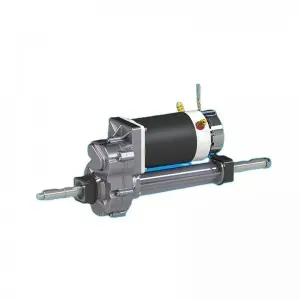Your vehicle’s transaxle plays a vital role in transmitting power from the engine to the wheels. Knowing the signs of transaxle failure is critical to ensuring the life and performance of your vehicle. In this blog, we will discuss how to identify and diagnose common problems related to transaxle damage. By taking immediate action, you can avoid costly repairs and potentially dangerous situations. So buckle up and let’s enter the world of transaxles!
1. Abnormal noise and vibration
One of the most common indicators that a transaxle is failing is strange noises and vibrations. If you notice a grinding, whining, or clunking sound when accelerating, decelerating, or changing gears, this is a sure sign of a transaxle problem. Also, if you feel vehicle vibrations, especially at high speeds, it’s crucial to have the transaxle checked by a professional.
2. Difficulty in shifting gears
A bad transaxle can often make smooth shifting difficult. If you find it becomes increasingly difficult to engage or disengage gears, the gears slip, or you experience resistance when changing gears, your transaxle may be malfunctioning. Ignoring these issues could lead to more serious damage and higher repair costs in the future.
3. Liquid leakage
Transaxles rely on a special type of oil called transmission oil for proper lubrication and cooling. If you notice puddles of red or brown fluid under the vehicle, or observe a drop in the fluid level on the dipstick, there may be a transaxle leak. A low fluid level can cause excessive wear on the internal components of the transaxle, which can eventually lead to failure.
4. Burnt smell
A burnt smell is a strong indication that there is a problem with your vehicle’s transaxle. It is usually caused by overheating caused by friction within the transaxle. This could be due to an insufficient fluid level, contaminated fluid, or worn components. If you notice a burning smell, be sure to check the transaxle immediately to prevent further damage and potential failure.
Recognizing the signs of a transaxle failure can save you time, money, and the hassle of a complete transaxle failure. By noticing unusual noises, vibrations, difficult shifting, fluid leaks and burnt smells, you can take quick action before minor problems escalate into major problems. While regular maintenance and inspections are key to extending the life of your transaxle, knowing how to recognize signs of trouble can allow you to make informed decisions and keep your vehicle running smoothly. Remember, when it comes to your transaxle, it’s better to be safe than sorry.
Post time: Aug-21-2023


